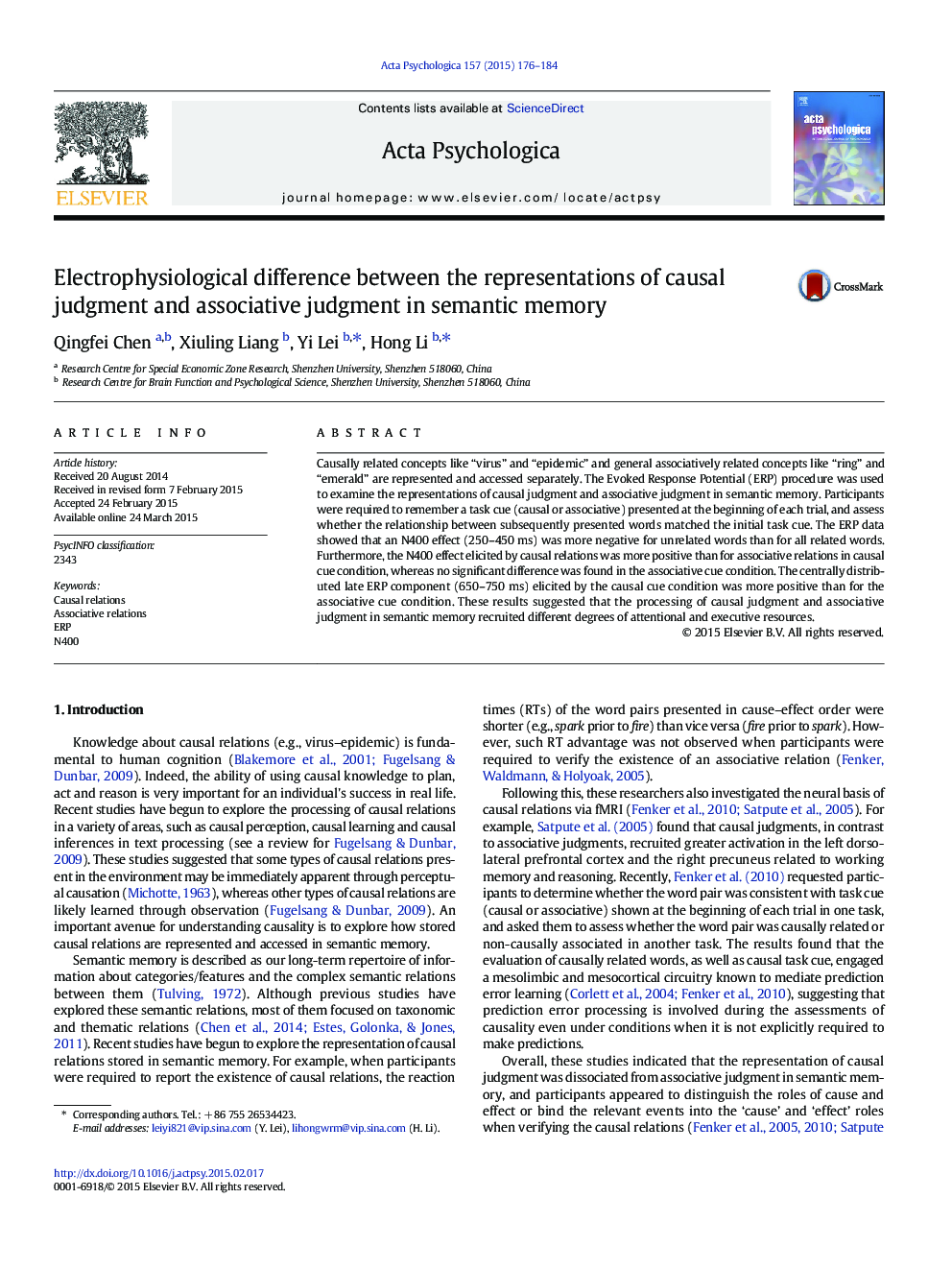| Article ID | Journal | Published Year | Pages | File Type |
|---|---|---|---|---|
| 7277395 | Acta Psychologica | 2015 | 9 Pages |
Abstract
Causally related concepts like “virus” and “epidemic” and general associatively related concepts like “ring” and “emerald” are represented and accessed separately. The Evoked Response Potential (ERP) procedure was used to examine the representations of causal judgment and associative judgment in semantic memory. Participants were required to remember a task cue (causal or associative) presented at the beginning of each trial, and assess whether the relationship between subsequently presented words matched the initial task cue. The ERP data showed that an N400 effect (250-450Â ms) was more negative for unrelated words than for all related words. Furthermore, the N400 effect elicited by causal relations was more positive than for associative relations in causal cue condition, whereas no significant difference was found in the associative cue condition. The centrally distributed late ERP component (650-750Â ms) elicited by the causal cue condition was more positive than for the associative cue condition. These results suggested that the processing of causal judgment and associative judgment in semantic memory recruited different degrees of attentional and executive resources.
Keywords
Related Topics
Life Sciences
Neuroscience
Cognitive Neuroscience
Authors
Qingfei Chen, Xiuling Liang, Yi Lei, Hong Li,
